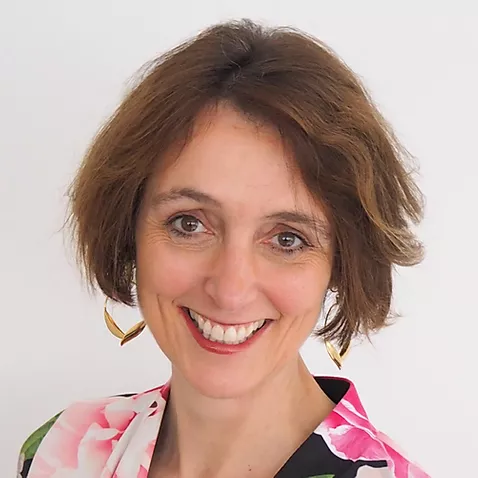In this episode, Claire Barrett — Director at APIsfirst Consulting — articulates the most important ingredients organizations need for a sustainably successful API program, and also details the Women in APIs program she is leading. Have a listen here:
Claire started the episode explaining her role as having three elements: strategy translator, inclusive leader, and API enthusiast. She has worked across many disciplines — strategic consulting, business architecture, project delivery, transformational program management — in numerous industries (banking, healthcare, insurance, manufacturing, distribution) around the world. Claire uses the experience gained from this diverse background to make strategy happen. She sees APIs as a useful tool to help in that mission.
Claire, Mike, and Matt all have talks at the API Days INTERFACE event.Claire’s talk is titled, “Pain Relief or Whole Lifestyle Changes? Health and Wellbeing Strategies for a Maturing API Program.” (Mike’s and Matt’s talks are also available for replay) Claire explains the title of her talk, noting that organizations confronting transformational change can view it as a trip to the doctor. You can seek short term medication, but that type of pain relief doesn’t last. What’s needed is a lifestyle change, or in an organization’s case, cultural change. That requires time and space to make it happen. Claire’s talk focuses on three attributes of a successful API program: the right measures, the right messaging, and the right diversity. The podcast delves into these attributes.
Measures: Determining API program health
In Claire’s research, she does not see a consistent set of KPIs that are universal across all organizations. What needs to be measured depends on the business objectives and maturity of the organization? What cost management models are already in place? Are APIs being used in support of some higher level change initiative?
Most interestingly, she has found that organizations tend to change what they measure as they mature. Going back to the healthcare analogy, you might measure blood pressure and sugar levels early on, but switch to exercise performance as the fitness regimen takes hold. In API terms, this means you might measure something as simple as the number of APIs published early on, but move to performance, developer experience, and customer onboarding as the API program matures.
Claire also found that it’s better to focus on a small number of measures that have many inputs. These should be a blend of small things that can show progress over short intervals, and bigger measures that reflect the maturity of the overall program. “APIs create a bow wave that can get other things going,” she notes. One last best practice Claire mentions is that measures must be instrumented, or they won’t hold water.
Messaging: Communicating through action
Claire believes that everyone in an organization can be a leader, not just those at the top of the org chart. This holds true for communication as well: everyone in the organization can be a messenger of transformational change. She uses a sports analogy to drive this point home. At a soccer game, the crowd needs to chant in unison in order for the players on the field to hear, otherwise it just sounds like a bunch of noise.
Regarding messaging, Claire has asked two questions in her research. The first is, “where should messages resonate?” This really means which audience should be the focus of communicating change: customers and employees, or stakeholders (investors, regulators). This really comes down to a split between a focus on revenue-generating activities and cost-savings activities. In Claire’s research, 70% of those interviewed felt that the focus should be on the top line activities impacting customers and employees, and this was consistent across all sizes of organizations.
The second question was about what messages resonate. Claire has observed that it is necessary to get some early wins that deliver value quickly in an API program in order to earn trust and credibility within the organization. These successes are needed to make the organization receptive to the bigger changes that are coming. Without those early wins, a broad statement of intent to change can fall flat and meet widespread resistance.
Diversity: A perspective collective
For an API program, having diversity of thought and perspectives in its definition and execution is crucially important. In Claire’s words:
“The idea of creating a developer portal to open up your business in order for other people to come into your organization and create offerings that could potentially compete with yours directly and then to put your efforts into making that developer portal as compelling as possible is such an upside down way of thinking it naturally requires a diverse group of people, insights, and perspectives to think like that.”
Putting together an API program requires thinking from all sorts of perspectives: business strategy, design thinking, engineering discipline, governance and enablement, financial considerations, and more. It also requires a variety of soft skills; cross-team collaboration, influencing and reframing, operating outside traditional organizational boundaries, and letting go of preconceived notions. Mike agrees with Claire, likening APIs to a kind of intersectionality. In his words, “With APIs, you are designing something for someone you’ve never met to create something you’ve never thought of.”
At this point, the podcast switches gears to focus on Claire’s work with the Women in APIs program.
Women in APIs
The Women in APIs program was started in 2018, led by the API Days conference series. Its mission is to encourage greater diversity in tech conference participation, whether through speaking and moderating, or just attending. Claire has been involved in supporting women in tech for more than ten years, and recently took up the leadership mantle for Women in APIs. She has observed that promoting gender diversity can have a positive effect on diversity of race, ethnicity, and sexual orientation.
Claire feels that the API community has a number of attributes that make it a special one for promoting diversity. It is global and multicultural. There is a good track record of creativity and collaboration, with an innovative “outside-the-box” mindset. In Claire’s experience, the API community has been welcoming and friendly. She believes the key to achieving greater gender balance at events is to start with an understanding of the data, for both numbers and reasons. She feels a strong message on “the why” — why attending or speaking is the right thing to do — will help drive more participation. She also feels there might be different participation options that could lead to higher participation levels, and is interested to see whether the pandemic-caused virtual event shift has had an effect on gender diversity numbers.
Claire has some advice on how men can be good allies for their colleagues who identify as women. Find your own voice, and don’t be afraid to engage with colleagues, family, and friends. When it comes to communication, push yourself out of your comfort zone sometimes. Look for opportunities — even small ones — to practice inclusion. Lastly, never think you’re done!
Mike closes out the podcast with a quote from James Baldwin that applies to the whole discussion: “Not everything that is faced can be changed, but nothing can be changed until it is faced.”
Hope you enjoy this episode! Follow the podcast on SoundCloud or subscribe to our newsletter above to get summaries of the episodes.










